A brief history of 200 years of involuntary migration, imposed statelessness, exploitation and marginalization of Upcountry or Malaiyaha Tamil tea plantation workers.
by SALAM & Maynmai, Jamhoor, India, June 6, 2024
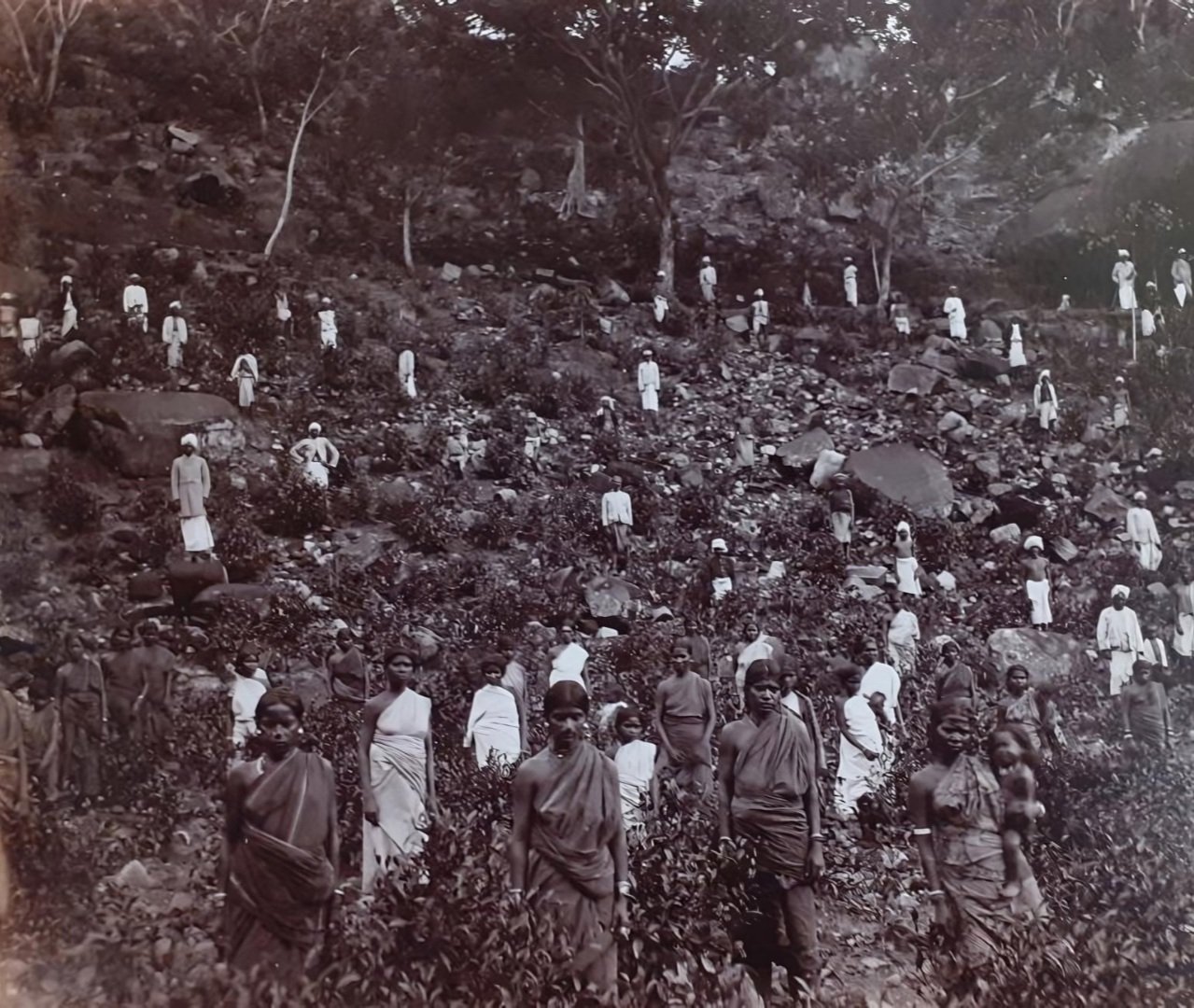
Tea Estate, Ceylon. Image: 1891 collection, V&A
200 years ago, the British empire brought Tamil plantation workers against their will from southern India to the Malaiyaha region in Sri Lanka. Upcountry Tamils or the Malaiyaha Makkals continue to live there today, their lives still tied to plantations, and thus subject to their laws. To mark this event and to protest their marginalization and precarious status, plantation workers and their allies marched for 16 days tracing the 250 KM route from Thalaimannar in north-western Sri Lanka, where they landed by boat in the 19th century, to Matale in the Malaiyaha region. Along the route, they held a series of events and meetings to raise awareness among other Sri Lankan communities about the history, struggles, contributions, and aspirations of the Malaiyaha Tamil community. They have one simple demand: recognition as free and equal citizens of Sri Lanka.
Ceylon Tea, Sri Lanka’s “gift to the world” symbolizes national pride on the global stage. On its 150th anniversary, Prime Minister Ranil announced a plan to expand a new share-cropping system to increase global competitiveness by lowering costs of production and worker wages. The government also began privatizing a major tea estate in Kandy.That year, workers led a series of strikes and protests across tea plantations against the new government-backed productivity requirements, wage cuts and job loss. Last year, workers highlighted the much longer and darker history of 200 years of involuntary migration, imposed statelessness, exploitation and marginalization.
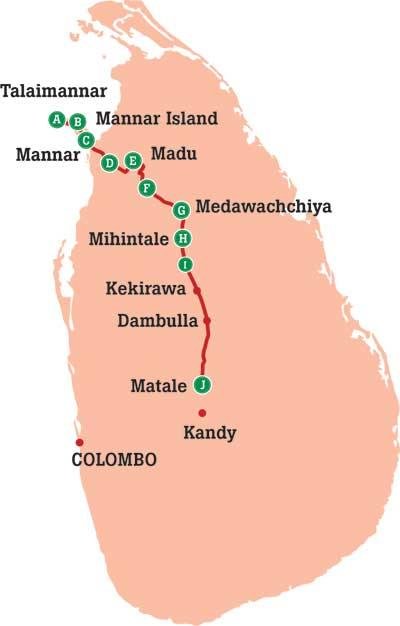
Route of the 2023 plantation workers march. Image: The Daily Mirror, Sri Lanka
Fr. Sathivel, the convener of the Organisation to Protect the Dignity of the Malaiyaha Community and a long-time organizer within the Malaiyaha Tamil community explained, “In these 200 years, Sri Lanka’s other communities have facilities and opportunities because of the labour of hill country Tamils.” In addition to Sri Lanka’s tea economy, “roads, trains, ports, schools and hospitals were developed through first [their] physical labour [in the plantation] and second through the money they earned and [brought] from abroad.” Malaiyaha Tamils are still waiting to see the fruits of their labour. In just two months after the march, plantation management and security personnel attacked two Malaiyaha Tamil families on two separate estates, demolishing their homes. Even though there were no formal eviction orders, both families remain displaced.
Colonial Era of Involuntary Migration
In the mid-nineteenth century, the British appropriated vast amounts of forest and “unoccupied” land in Sri Lanka as crown land, and sold it at low cost to British planters. However, after the abolition of slavery, the British were unable to find workers for the plantations. The Sinhala peasantry owned and cultivated their own land, and were unwilling to work on the new estates for low wages.
“Drawing on their experience of using indentured labor on Caribbean and American plantations, the British created a captive, migrant labour force, that was violently disciplined and intentionally isolated on plantations.”
To supply cheap labor, the British imported oppressed caste workers from South India under the kangany system. Kanganis are supervisors and recruiters who use debt to bind workers. Drawing on their experience of using indentured labor on Caribbean and American plantations, the British created a captive, migrant labour force that was violently disciplined and intentionally isolated on plantations. Whereas the marchers followed a paved asphalt road, in the original journey, workers had to carve out a path through the dense and dangerous jungle. During those first journeys from the Madras Presidency to Ceylon between 1823 to 1849, an estimated 160,000 people died.
After the collapse of coffee plantations due to disease, tea quickly emerged as the primary cash crop in the hill country. As tea requires year-long maintenance, Malaiyaha Tamils went from being a migrant labour force to a permanent community. Tea became central to the economy, with Sri Lanka emerging as one of the world’s leading producers by the end of the 19th century. While the tea industry continued to produce immense wealth for British and later Sri Lankan planters, the workers’ economic situation remained immiserated: they lived in crowded rooms often without access to running water, sanitation, medical facilities or schools.
When Sri Lanka gained independence in 1948, the Sinhala majority saw Malaiyaha Tamils as foreigners in the nascent state which denied them citizenship, land and basic workers’ rights. Malaiyaha Tamils continue to face difficulty in accessing these rights, and have been subjected to periodic displacements, from recurring famine, ethnic riots, and constant poverty. Furthermore, indigenous Sri Lankan Tamil communities practice caste discrimination against Indian-origin Tamils.
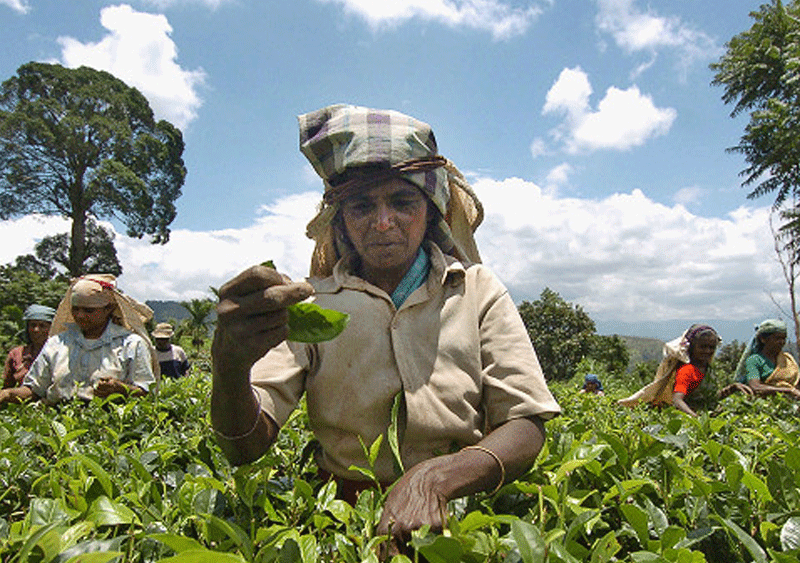
Tamil tea workers in Sri Lanka. Image: The Independent
A Long History of Struggle
The workers’ struggle was powerful from the 1920s to the 1940s. Malaiyaha Tamils supported left parties and unions, including the Ceylon Workers Congress and the Lanka Sama Samaja Party, which led the All-Ceylon Estate Workers Union. These unions saw plantation workers as slaves and fought to end bonded labour, secure the right of unions to negotiate with companies and the state, establish minimum wages, and fight back against the kangany system. Mass action and strikes through the unions brought about significant changes in the lives of plantation workers through the establishment of wage boards, the construction of additional schools, and the implementation of a preliminary welfare system within the plantations. The unions were also deeply anti-colonial and a number of strikes on estates were part of the movement for independence.
“Malaiyaha Tamils supported left parties and unions, including the Ceylon Workers Congress and the Lanka Sama Samaja Party which led the All-Ceylon Estate Workers Union. ”
In the 1940s, the powerful labour movement and the resulting political power of estate workers seeded fears among the Sinhala elites about growing leftist movements. Along with flagrant racism and casteism towards Malaiyaha Tamils, this fear led conservative Sinhala politicians to exclude the entire community from citizenship upon Sri Lanka’s independence.
The Sri Lankan state disenfranchised Malaiyaha Tamils by enacting new citizenship laws that required people to prove indigeneity through documents that showed that their father, grandfather or great-grandfather was born in Ceylon. However, proving citizenship was only necessary if “doubt” existed, establishing a legal precedent through which most ethnicities became citizens but Malaiyaha Tamils were selectively made stateless. The legislation disenfranchised them and created a captive—and now stateless—labour force. The act also eliminated the Malaiyaha Tamil vote and reduced the power of leftist parties that the community supported. The Ceylon Workers Congress (CWC) and other Malaiyaha leaders lost their seats in parliament. Nonetheless, the CWC became a very powerful union with a near monopoly of Malaiyaha Tamil representation.
Although they were stateless, most Malaiyaha Tamils continued to live in Sri Lanka until the Sirimavo-Shastri pact of 1964. Under this pact, 525,000 Malaiyaha Tamils were to be “repatriated” to India and the remainder were to be granted Sri Lankan citizenship. “Repatriation” was a violent process which separated many families across the two countries. The number of Malaiyaha Tamils in Sri Lanka was halved, rendering them an even smaller minority. With the difficulties of statelessness, threats of forced repatriation and family separation, unions shifted their focus from fighting for wages and labour rights to demanding citizenship rights.
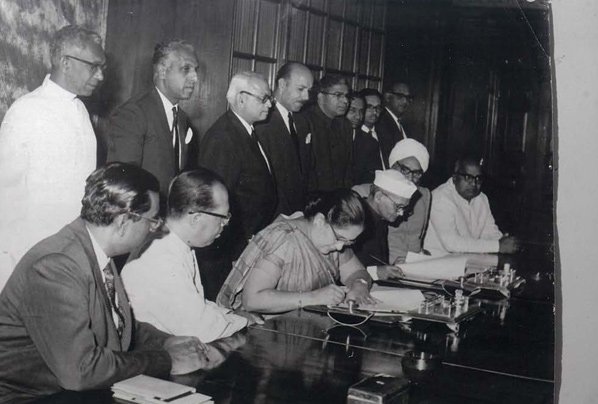
Sirimavo Bandaranaike , the Prime Minister of Sri Lanka, and Lal Bahadur Shastri, the Prime Minister of India, sign the Sirimavo-Shastri pact on 30 October 1964. Image: NewsIn Asia
In the 1970s, plantations were nationalized. However, the policy of Ceylonization or nationalization that sought to replace Tamil workers with Sinhala workers, hurt Malaiyaha Tamils. The colonial era Wastelands and Crown Lands Act, which had served as the foundation for establishing plantations, gave rise to the perception that plantation workers were beneficiaries of colonization who had displaced the Sinhala peasantry. This led to their exclusion from land redistribution efforts under the nominally socialist government of the 1970s. Through these efforts to nationalize and redistribute plantations, much of the land was given to the Sinahala peasantry, leaving many Malaiyaha Tamils without homes or employment. Estates were required to employ Kandyan Sinhala peasants, leading to widespread poverty, unemployment and displacement of Malaiyaha Tamils, many of whom began to migrate to the North and East.
Although these efforts were not successful on a large scale, they robbed Malaiyaha Tamils of their homes and jobs, and set a precedent for Sinhala peasantry to seize land from Malaiyaha Tamils during periods of anti-Tamil violence. At the time, there were episodes of famine due to skyrocketing costs of food imports, stagnating export earnings in a heavily export-dependent economy, and government mismanagement. While this was a difficult time for many in Sri Lanka, Malaiyaha Tamils suffered especially because of the decrease in rice subsidies which was devastating for daily wage workers. Furthermore, anti-Tamil racism and lack of political representation further exacerbated difficulties in access to already-limited food rations.
Nonetheless, nationalization put pressure on the government to improve social conditions for workers, such as upgrading housing, health services and education. Plantation workers, who were now public sector employees, expected increased pay and carried out a nine-day strike in April 1984. As a result, the government agreed to demands for wage hikes, notably reducing the gender wage gap.
Throughout this period, the labour movement was in decline. The advent of structural adjustment in the 1980s and 1990s changed the plantation sector. The plantation welfare system was dismantled. Additionally, the emergence of “yellow” trade unions who were allied to employers and ruling parties diluted the labour movement, leading to a shift in how workers saw trade unions.
“From 2018 to 2020, thousands of workers conducted a series of protests and strikes, demanding an increase in their daily wages and protesting against productivity demands and wage cuts imposed by plantation owners. ”
After privatization, the Sri Lankan government relinquished any responsibility towards plantation workers, leaving them in the hands of a new private management. This further eroded labour rights. Permanent, registered workers were let go and pushed into informal employment without guaranteed workdays. Simultaneously, the revenues of government-owned estates declined due to a lack of investment in replanting tea. With shifts towards dairy farming and palm oil cultivation, and the sale of land to different ventures, workers saw their livelihoods disrupted even further. Amidst all these challenges, Malaiyaha Tamils persisted in their struggle for rights and recognition, with many finally receiving citizenship in 1987, albeit after lengthy processes. For others, attaining citizenship remained elusive, highlighting the complex nature of their fight for recognition.
The Way Forward
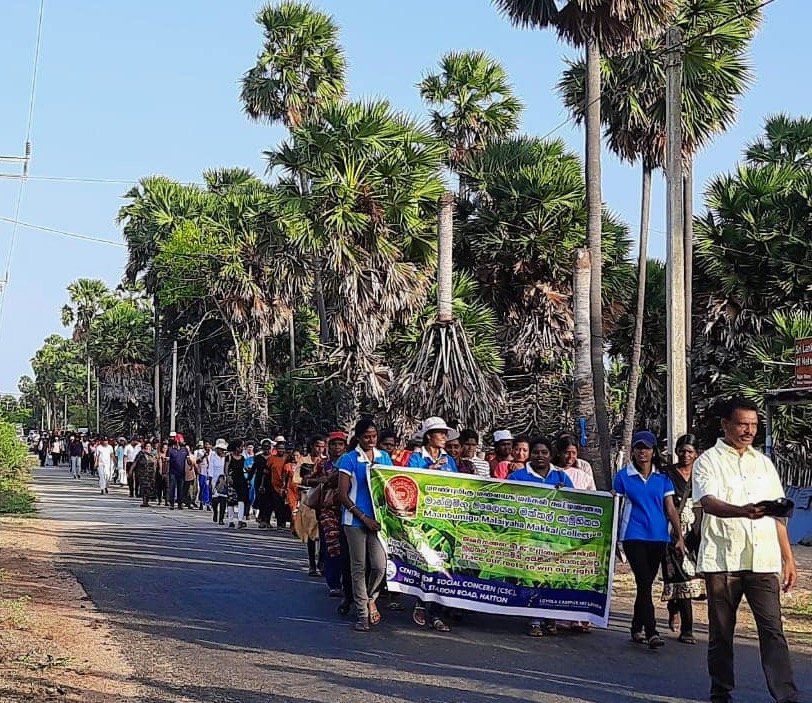
Malaiyaha Tamil Marchers, July 2023. Image: Facebook
In recent years, Malaiyaha Tamil plantation workers labour organizing has gained momentum. From 2018 to 2020, thousands of workers conducted a series of protests and strikes, demanding an increase in their daily wages and protesting against productivity demands and wage cuts imposed by plantation owners. Plantation workers also agitated for improved living conditions, as the plantation homes still lack sanitation, running water, medical facilities, and schools. The COVID-19 pandemic and the economic crisis also acutely affected the tea industry, with tea production down by nearly a quarter, the effects of which have largely been borne by plantation workers.
Sri Lanka-wide popular uprisings of 2022, the aragalaya, challenged inflation. Malaiyaha Tamils protested alongside Sri Lankan Tamil, Muslim and Sinhala communities. However, many felt that the particular needs of Malaiyaha Tamil workers were not meaningfully incorporated into the movement’s demands. “[Aragalaya leaders] did not involve themselves in the political, economic, and social demands of Malaiyaha Tamils… [neither] the need for nationhood nor the issue of land ownership,” notes Fr. Sathivel.
Malaiyaha Tamils have a list of demands (see below) which include affirmative action, political power-sharing, a living wage, legal protection, Tamil language rights, secure land tenure, and the recognition and acknowledgement of the history, struggles, contributions and cultural identity of the Malaiyaha Tamil community.
The Malaiyaha Tamil march in July of 2023 follows a centuries-long struggle for dignity, livable wages, land and citizenship. The struggle is far from over. As Fr. Sathivel points out, the challenge moving forward will be for Malaiyaha Tamils to envision “how [they] would like to be recognized by the 300 year mark.”
What also remains to be seen is how other organized resistance movements will include the demands of plantation workers more centrally and how solidarities and linkages across these movements could change and shape labour, feminist, Tamil and anti-austerity movements in the years to come.
Here is the list of demands from the National Christian Council of Sri Lanka and a wide group of Civil Society Organizations and individuals who are from and/or work with the Malaiyaha community:
-
Acknowledgement of our history, struggle and contribution,
-
Recognition as a constituent people of post-independent Sri Lanka, with a distinct identity on par with other main communities,
-
Affirmative action on Education, Health and Social Safety measures, to achieve parity with national averages,
-
A living wage, decent work, legal protection and equal pay for men and women workers,
-
Land with secure tenure for housing and livelihoods
-
Equal use and parity of status for the Tamil Language
-
Equal access to Government Services
-
Demarcation of plantation human settlements as new villages
-
Protection of domestic workers
-
Preservation and promotion of Malaiyaha culture
-
Equitable and inclusive electoral system and power sharing that give a meaningful role in governance at all tiers of government
SALAM works towards building a political coalition of South Asians from the left. We work with South Asian and internationalist left organizations, to politically bolster working class immigrant-led movements in the diaspora, and support people’s movements in the subcontinent.
Maynmai is a Tamil-led, anti-caste, feminist, multi-ethnic, multi-racial formation